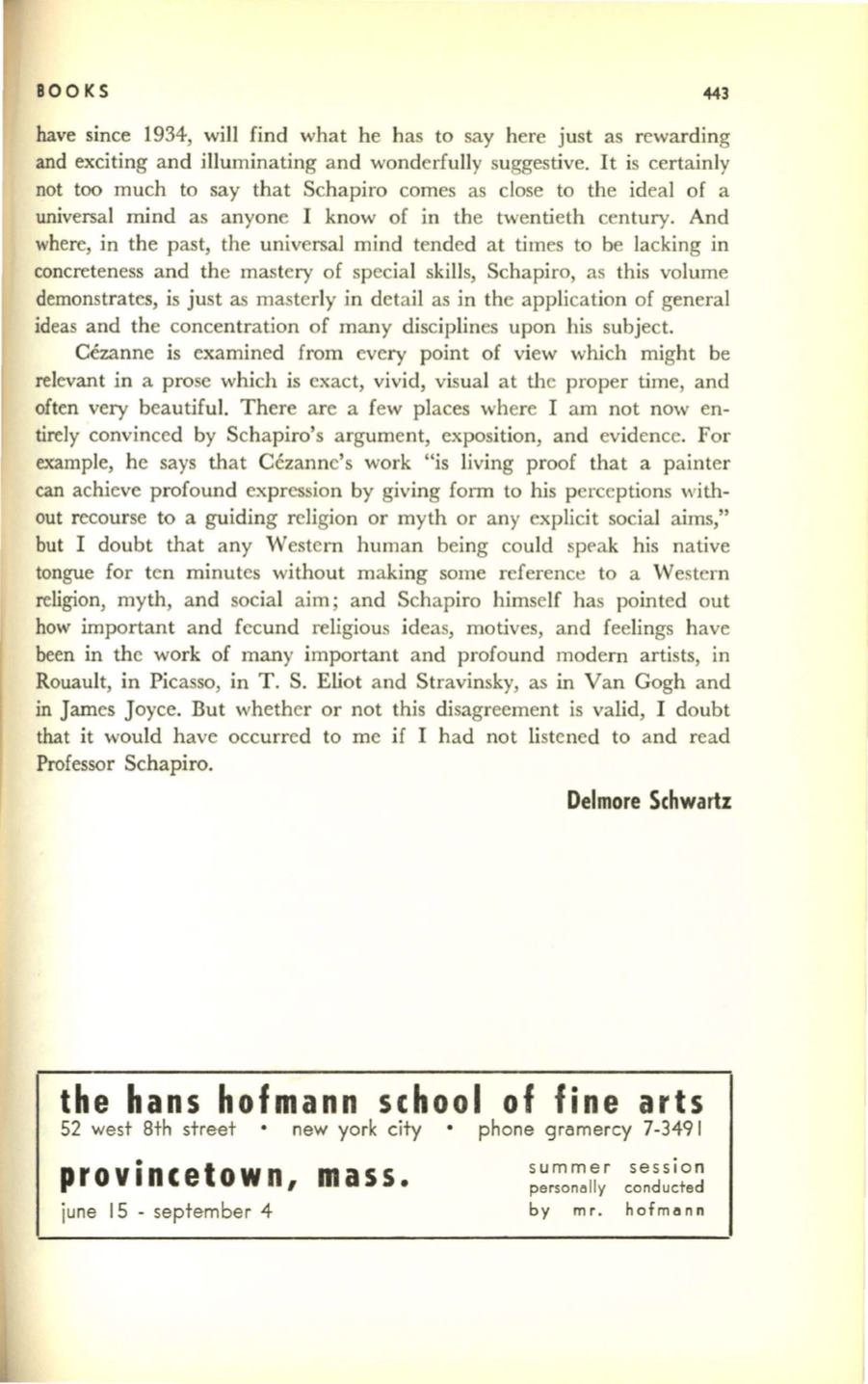
BOO KS
443
have since 1934, will find what he has to say here just as rewarding
and exciting and illuminating and wonderfully suggestive.
It
is certainly
not too much to say that Schapiro comes as close to the ideal of a
universal mind as anyone I know of in the twentieth century. And
where, in the past, the universal mind tended at times to be lacking in
concreteness and the mastery of special skills, Schapiro, as this volume
demonstrates, is just as masterly in detail as in the application of general
ideas and the concentration of many disciplines upon his subject.
Cezanne is examined from every point of view which might be
relevant in a prose which is exact, vivid, visual at the proper time, and
often very beautiful. There are a few places where I am not now en–
tirely convinced by Schapiro's argument, exposition, and evidence. For
example, he says that Cezanne's work "is living proof that a painter
can achieve profound expression by giving form to his perceptions with–
out recourse to a guiding religion or myth or any explicit social aims,"
but I doubt that any Western human being could speak his native
tongue for ten minutes without making some reference to a Western
religion, myth, and social aim; and Schapiro himself has pointed out
how important and fecund religious ideas, motives, and feelings have
been in the work of many important and profound modern artists, in
RouauIt, in Picasso, in T. S. Eliot and Stravinsky, as in Van Gogh and
in James Joyce. But whether or not this disagreement is valid, I doubt
that it would have occurred to me if I h ad not listened to and read
Professor Schapiro.
Delmore Schwartz
the hans hofmann scho ol of fine arts
52 west 8th street
new york city
phone gramercy 7-349 1
provincetown, mass.
june 15 - september 4
summer sess ion
personllily conducted
by mr. hofmll n n


